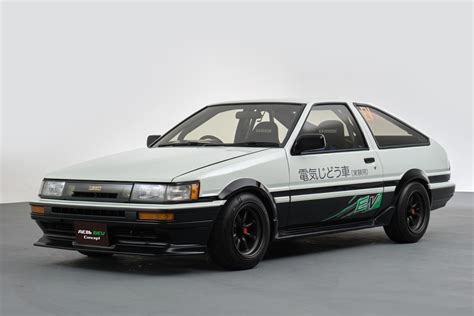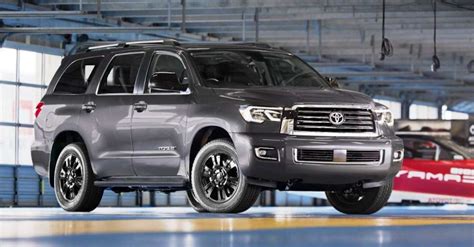
Dodge is recalling its newly released electric vehicle, the 2024 Charger Daytona, due to a software glitch that causes its artificial acceleration sound to continue playing even after the car is turned off, creating a humorous, albeit unintended, “backfire” effect. The issue affects all 2024 Charger Daytona models and requires a software update to resolve.
The unusual recall highlights the complexities of integrating traditional muscle car elements into electric vehicles. The Charger Daytona, Dodge’s first all-electric muscle car, features a “Fratzonic Chambered Exhaust” system, which uses speakers to mimic the sound of a gasoline engine. This system is intended to provide drivers with an auditory experience similar to that of a traditional Dodge Charger, a key selling point for the brand’s loyal customer base. However, a software malfunction can cause the sound to persist even when the vehicle is powered down, leading to unexpected and potentially embarrassing situations for owners.
According to Stellantis, Dodge’s parent company, the problem stems from a software calibration issue. “A software calibration issue may cause the sound to continue to play through the vehicle’s speakers after the ignition is turned off and the vehicle is parked,” the company stated in its official recall notice. This unintended audio playback can continue for an indeterminate amount of time, potentially draining the vehicle’s battery and drawing unwanted attention.
The recall affects all 2024 Dodge Charger Daytona models, encompassing both the R/T and Scat Pack trims. The number of vehicles impacted by the recall is currently estimated to be relatively small, as the 2024 Charger Daytona is a new model and has only recently begun to reach customers. Stellantis has not yet released exact figures for the number of vehicles affected, but anticipates that the recall will be manageable due to the limited production run thus far.
To rectify the issue, Dodge will issue a software update to all affected vehicles. The update will recalibrate the Fratzonic Chambered Exhaust system, ensuring that the sound only plays when the vehicle is in operation and ceases immediately upon shutdown. The update will be provided free of charge to owners, and Dodge will notify affected customers via mail with instructions on how to schedule a service appointment at their local Dodge dealership.
While the recall is undoubtedly a setback for Dodge, it also presents an opportunity to refine the technology and improve the overall ownership experience. The Fratzonic Chambered Exhaust system is a novel approach to bridging the gap between electric vehicles and traditional muscle cars, and Dodge is committed to ensuring that it functions as intended. The company has emphasized that the safety of its customers is its top priority and that it is taking all necessary steps to address the issue promptly and effectively.
This recall underscores the challenges automakers face as they transition to electric vehicles while attempting to retain the characteristics that define their brands. For Dodge, a brand synonymous with powerful engines and aggressive styling, the challenge is particularly acute. The Fratzonic Chambered Exhaust system is just one example of the innovative solutions the company is exploring to maintain its identity in the electric era.
The incident also raises questions about the long-term viability of artificial engine sounds in electric vehicles. While some drivers may appreciate the auditory feedback, others may find it unnecessary or even annoying. As electric vehicles become more mainstream, automakers will need to carefully consider the preferences of a diverse customer base and tailor their products accordingly.
Deeper Dive into the Fratzonic Chambered Exhaust
The Fratzonic Chambered Exhaust is a unique feature designed specifically for the Dodge Charger Daytona. It aims to replicate the visceral experience of driving a gasoline-powered muscle car by producing a multi-layered exhaust note through an amplifier and tuning chamber. Dodge engineers worked to create a sound that is both recognizable and distinct, capturing the essence of the brand’s iconic V8 engines.
The system utilizes a series of strategically placed speakers to generate the artificial engine sound. These speakers are housed within a chambered exhaust system that amplifies and modulates the sound waves, creating a more realistic and immersive experience. The sound is synchronized with the vehicle’s acceleration and speed, providing drivers with auditory feedback that mimics the performance of a traditional engine.
The Fratzonic Chambered Exhaust is not simply a pre-recorded engine sound played through the speakers. It is a complex system that dynamically adjusts the sound based on a variety of factors, including throttle position, speed, and driving mode. This allows the system to create a range of sounds, from a low rumble at idle to a roaring exhaust note at full throttle.
The development of the Fratzonic Chambered Exhaust was a significant undertaking for Dodge engineers. They spent countless hours refining the sound to ensure that it was both authentic and appealing. The goal was to create a sound that would resonate with Dodge enthusiasts while also attracting new customers to the brand.
The Broader Context: Electric Vehicle Sound Design
The Dodge Charger Daytona recall highlights the growing importance of sound design in the electric vehicle industry. As electric vehicles become more prevalent, automakers are increasingly focused on creating unique and engaging auditory experiences for drivers and passengers. This is particularly important because electric vehicles lack the inherent engine noise of gasoline-powered cars, which can leave some drivers feeling disconnected from the driving experience.
There are several approaches to electric vehicle sound design. Some automakers are creating artificial engine sounds that mimic the characteristics of traditional engines, while others are developing entirely new and futuristic sounds. The goal is to create a sound that is both pleasant and informative, providing drivers with feedback about the vehicle’s speed, acceleration, and overall performance.
One of the challenges of electric vehicle sound design is creating a sound that is both appealing and safe. Electric vehicles are inherently quiet, which can make them difficult for pedestrians and cyclists to hear. To address this issue, many electric vehicles are equipped with external speakers that emit a warning sound at low speeds. This sound is designed to alert pedestrians to the presence of the vehicle and prevent accidents.
The European Union has mandated that all new electric vehicles must be equipped with an Acoustic Vehicle Alerting System (AVAS). The AVAS must emit a continuous sound when the vehicle is traveling at speeds below 20 kilometers per hour (12 miles per hour). The sound must be easily detectable by pedestrians and cyclists and must not be excessively loud or disruptive.
Stellantis’s Response and Future Plans
Stellantis has taken swift action to address the software glitch affecting the Dodge Charger Daytona. The company has issued a recall for all affected vehicles and is working to provide a software update that will resolve the issue. Stellantis has also emphasized its commitment to ensuring the safety and satisfaction of its customers.
“We are committed to providing our customers with the best possible ownership experience,” said a Stellantis spokesperson. “We are taking this issue very seriously and are working diligently to resolve it as quickly as possible.”
In addition to the software update, Stellantis is also reviewing the design and development process for the Fratzonic Chambered Exhaust system. The company is looking for ways to improve the system’s reliability and ensure that it functions as intended. Stellantis is also considering incorporating customer feedback into the design of future electric vehicle sound systems.
Stellantis is investing heavily in electric vehicle technology and plans to launch a range of new electric vehicles in the coming years. The company is committed to providing customers with a variety of electric vehicle options, including both performance-oriented models and more practical, everyday vehicles.
The Impact on Dodge’s Brand Image
The recall of the Dodge Charger Daytona could potentially impact the brand’s image, particularly among loyal customers who value the sound and feel of traditional muscle cars. However, the company’s swift response and commitment to resolving the issue could mitigate any long-term damage.
Dodge has a strong brand identity that is closely associated with performance, power, and attitude. The company has a loyal following of enthusiasts who appreciate its aggressive styling and high-performance engines. The transition to electric vehicles presents a challenge for Dodge, as the company must find ways to maintain its brand identity while embracing new technology.
The Fratzonic Chambered Exhaust system is one example of how Dodge is attempting to bridge the gap between electric vehicles and traditional muscle cars. By creating an artificial engine sound that mimics the characteristics of a V8 engine, Dodge hopes to appeal to its existing customer base while also attracting new customers to the brand.
The success of the Fratzonic Chambered Exhaust system will depend on how well it is executed. If the system sounds realistic and engaging, it could be a valuable asset for Dodge. However, if the system sounds artificial or annoying, it could alienate customers.
The Future of Electric Muscle Cars
The Dodge Charger Daytona is a significant milestone in the evolution of electric muscle cars. It is the first all-electric muscle car from a major automaker and represents a bold step towards the future of performance vehicles.
The Charger Daytona is not just an electric car; it is a Dodge. It retains the aggressive styling, powerful performance, and rebellious attitude that have made Dodge a beloved brand for decades. The Charger Daytona is a sign that electric vehicles can be just as exciting and engaging as their gasoline-powered counterparts.
As electric vehicle technology continues to improve, we can expect to see more electric muscle cars from other automakers. These vehicles will offer a combination of performance, efficiency, and sustainability that will appeal to a wide range of drivers.
The future of electric muscle cars is bright. These vehicles have the potential to revolutionize the automotive industry and provide drivers with a new and exciting way to experience performance.
Consumer Reactions and Online Buzz
Initial reactions to the Dodge Charger Daytona recall have been mixed, ranging from amusement to concern. On social media platforms, many users found the “backfire” sound issue humorous, creating memes and sharing jokes about the situation. However, some potential buyers expressed reservations about the reliability of the new technology and questioned Dodge’s quality control processes.
Online forums dedicated to Dodge enthusiasts saw discussions about the recall’s impact on the Charger Daytona’s reputation and the overall perception of electric muscle cars. While some remained optimistic about the vehicle’s potential, others voiced concerns about the long-term viability of artificial engine sounds and the challenges of replicating the visceral experience of driving a gasoline-powered muscle car.
Automotive journalists and industry analysts have also weighed in on the recall, highlighting the complexities of integrating traditional muscle car elements into electric vehicles. Some praised Dodge for its innovative approach to sound design, while others criticized the company for prioritizing aesthetics over functionality. The recall has sparked a broader debate about the future of electric vehicle sound design and the role of artificial engine sounds in the driving experience.
Legal and Regulatory Implications
The Dodge Charger Daytona recall has raised some legal and regulatory questions, particularly regarding the safety of electric vehicles and the potential for unintended consequences arising from new technologies.
The National Highway Traffic Safety Administration (NHTSA) is responsible for overseeing vehicle safety in the United States. NHTSA has the authority to issue recalls for vehicles that pose a safety risk to consumers. In this case, NHTSA has not yet issued a formal recall order, but it is likely monitoring the situation closely.
The recall also raises questions about the liability of automakers for defects in their vehicles. If a customer is injured as a result of a defect, the automaker may be liable for damages. In this case, it is unlikely that the software glitch would cause any physical harm, but it could potentially lead to other problems, such as battery drain or electrical issues.
Frequently Asked Questions (FAQ)
Q1: What exactly is the problem with the Dodge Charger Daytona that led to the recall?
- A: The issue is a software calibration problem that causes the “Fratzonic Chambered Exhaust” system, which simulates engine sounds, to continue playing even after the car is turned off. This creates an unintended “backfire” effect and can potentially drain the battery. According to Stellantis, “A software calibration issue may cause the sound to continue to play through the vehicle’s speakers after the ignition is turned off and the vehicle is parked.”
Q2: Which Dodge Charger Daytona models are affected by the recall?
- A: All 2024 Dodge Charger Daytona models, including both the R/T and Scat Pack trims, are affected by the recall. The recall encompasses all vehicles equipped with the Fratzonic Chambered Exhaust system.
Q3: How will Dodge fix the problem, and will it cost me anything?
- A: Dodge will issue a software update to all affected vehicles. This update will recalibrate the Fratzonic Chambered Exhaust system and ensure that the sound only plays when the vehicle is in operation. The update will be provided free of charge to owners. Dodge will notify affected customers via mail with instructions on how to schedule a service appointment at their local Dodge dealership.
Q4: Is this a safety issue, or is it just an annoying quirk?
- A: While the persistent sound is primarily considered an annoyance, it also poses a potential risk of draining the vehicle’s battery if it continues for an extended period. Stellantis has stated that the recall is being conducted to ensure customer satisfaction and prevent any potential inconvenience or issues.
Q5: What should I do if I own a 2024 Dodge Charger Daytona?
- A: If you own a 2024 Dodge Charger Daytona, you should wait to receive a notification letter from Dodge. The letter will provide instructions on how to schedule a service appointment at your local Dodge dealership for the free software update. In the meantime, if you experience the issue, you can contact your dealer for assistance.









